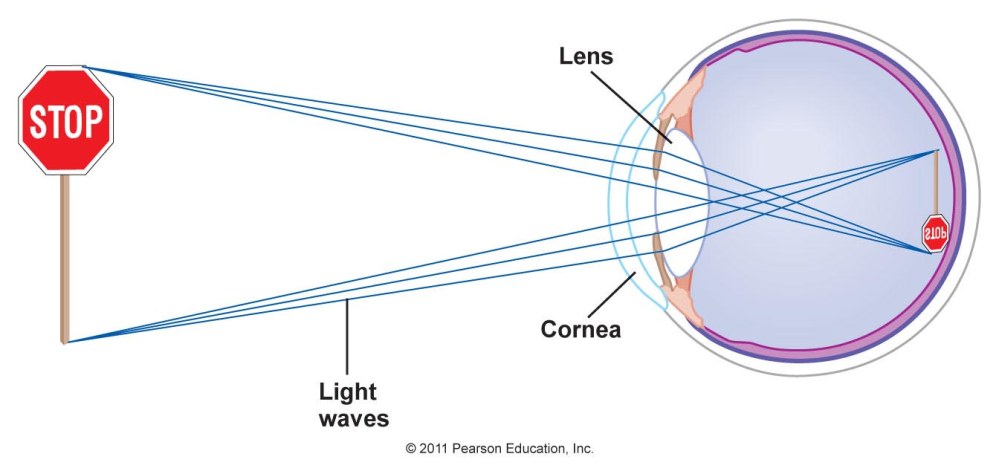How does the eye work?
By focusing rays of light
When parallel light waves strike a concave lens the waves striking the lens surface at a right angle goes straight through but light waves striking the surface at other angles diverge.
In contrast, light waves striking a convex lens converge at a single point called a focal point.
The distance from the long axis of the lens to the focal point is the focal length.
Both the cornea and the lens of the eye have convex surfaces and help to focus light rays onto the retina.
The cornea provides for most of the refraction but the curvature of the lens can be adjusted to adjust for near and far vision.
Normal vision. No correction needed.

Short sighted vision, and using a lens to correct the issue.

Far-sighted vision, and using a lens to correct the issue.

These images are from Zeiss.com Optics & the Eye.
ZEISS does work in the optical and optoelectronic industry.
How do muscles help focusing?
The muscles can pull or relax: this changes the shape of the cornea and lens.
This allows the eye to re-focus light rays as needed.
Iris and Pupil
The eyes can regulate the amount of light entering the eye by adjusting the size of the pupil.
The pupil is constricted in bright light and dilated in dim light.
The size of the pupil is controlled by the iris.
The iris has :
a circular muscle layer that constricts the pupil
and a radial muscle layer that dilates the pupil.
Parasympathetic neurons control the circular muscle layer while sympathetic neurons control the radial muscle layer.
Seeing color: Rods and Cones
http://askabiologist.asu.edu/rods-and-cones
1. Light moves through the lens of the eye to the back of the eye, which is the retina. Here, there are millions of rods and cones.
2. When light hits the discs in the outer segment of the rods and cones, the little bits of light (photons) activate the cells.
Rods can be activated in low light, but cones require much brighter light (many more photons).
Most of the light not absorbed by the rods or cones are absorbed by the epithelial cells behind them.
The discs hold rhodopsin, a special molecule that changes shape when activated by light.
This shape change allows rhodopsin to activate a second special protein molecule that then starts causing other changes involved in sending a visual signal.
For the signal to be sent through the cell, charged molecules called ions are let in and out of the cell in an action potential.
3. When the signal reaches the inner end (left side) of the rods and cones, the signal is passed to sets of neural cells.
4. The signal moves through neural cells in the optic nerve.
5. The optic nerve will send this information to the brain, where separate signals can be processed so you see them as a complete image.
Apps
* Primary additive colors; Primary subtractive colors
* Color saturation and illumination;
* how color filters operate to alter the apparent color of objects
* Color photos (printed or painted) made using just four dyes: magenta, cyan, yellow (subtractive primaries) and black. Mixing in differing proportions can reproduce almost any image or color.
http://micro.magnet.fsu.edu/optics/lightandcolor/primary.html
http://micro.magnet.fsu.edu/optics/lightandcolor/index.html
Perception of color
The Science of Why No One Agrees on the Color of This Dress:
human vision is much more context-dependent, than actually accurate

http://www.wired.com/2015/02/science-one-agrees-color-dress/
The “what is the color of this dress” debate explained
Scars of evolution
The mammalian eye has evolved over time.
In evolution, natural selection allows new structures to be built from an adaptation of an old structure, which lets things get done, but not ideally.
The process leads to a numerous defects.
Evolution of the eye: scars of evolution





